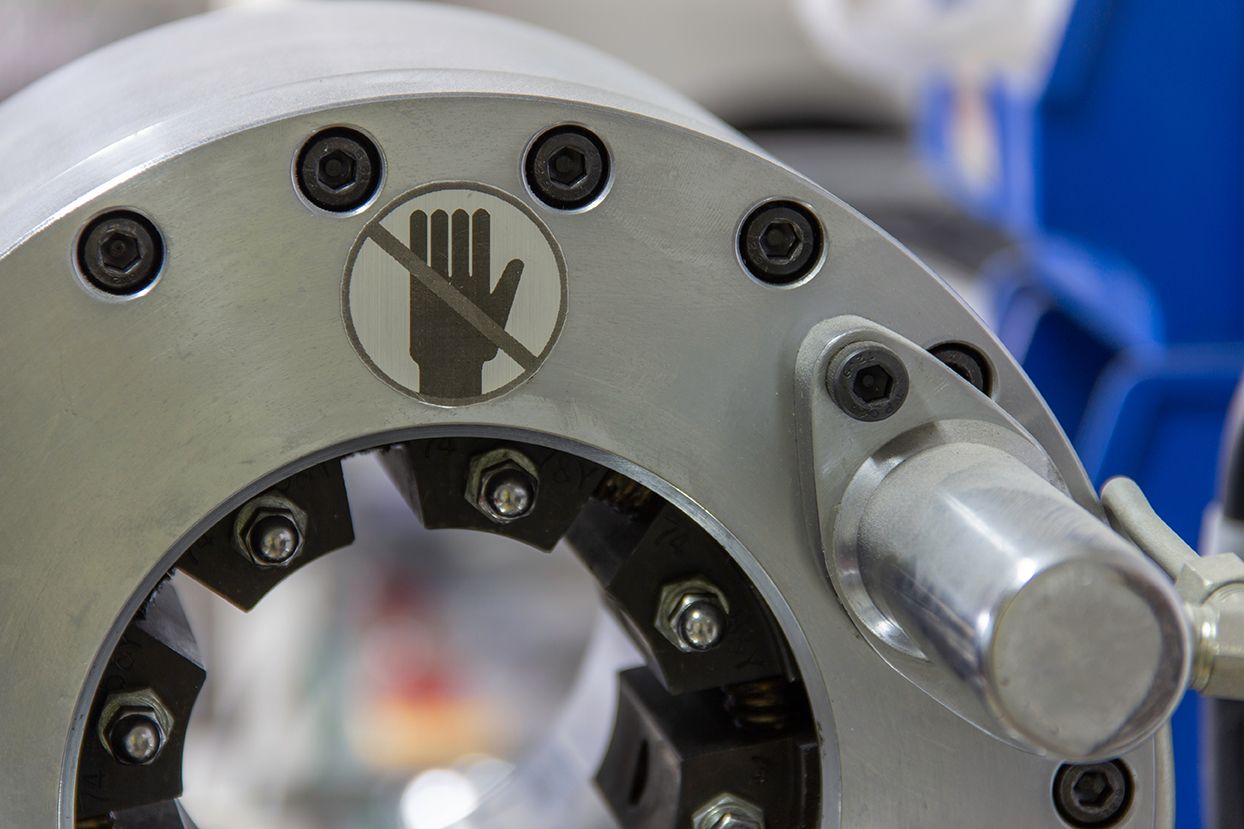Blog
To Guard, or Not to Guard, That May Not Be the Only Question
The law mandates employers ensure machinery in their plants is properly guarded. Unguarded or poorly guarded equipment is a costly problem, which impacts workers' compensation claims, purchasing workers' compensation coverage, and, most significantly, the human side of loss. Simply put, OSHA views this as a basic responsibility of the employer irrespective of the availability of cost effective solutions or liability issues.
Machine guarding and lock out tag out regulations are closely related, and both are consistently on the top 10 cited OSHA regulations list. This is likely not news to anyone working in safety in general manufacturing, processing, woodworking, metalworking, or a host of other industries. These OSHA standards, as well as the desire to keep good employees around and keep them happy and healthy, make machine guarding a popular topic.

For these reasons, sometimes creative, internally designed and built solutions to machine guarding problems can be found in older plants and on older equipment. In some cases, the equipment manufacturer has long since ceased to exist, and in other cases the cost of manufacturer produced guarding is high or takes a long time to procure. Additionally, an employer may have initially built portions of a machine themselves because the manufacturer failed to produce retro fit kits or guarding that fits a unique machine placement condition. In these cases, employers with internal shops and fabrication capabilities sometimes look to solve the issue themselves.
OSHA Machine Guarding: Where to find OSHA regulations for each type of machine is sometimes a little confusing. Ensure that you look deep to make sure you are getting the information you need.
Click here for the OSHA machine guarding topic page.
Note that some industries have their own regulation such as 1910.265 for sawmills which add some guarding requirements for machines within that specific industry. This page is not included on the general machine-guarding page from above while others are. Some state OSHA plans subscribe to the Federal Standards and still others sometimes have their own set of guarding standards.
Some machine types have their own regulation such as this one for some types of grinders.
Other regulation sections cover specific machine elements such as shafts and belts.
Safety versus Risk Management
Guarding a machine to OSHA or other more stringent standard specifications is preferred from a safety and moral perspective. That said, there is also a risk management viewpoint to consider.
To better understand the risk management issues involved, consider these questions:
- Can an employer inadvertently and unknowingly increase their own liability by making their own machine guards?
- Can an employee sue his/her employer for injuries from a machine the employer altered?
- Should an employer guard older machinery that was not guarded at the time of manufacture?
- Does removing a guard increase an employer's liability?
- Are there ways around the protections of WC exclusive remedy secondary to employer actions?
The answer to these questions is simply, yes, or at least possibly. While a discussion of liability statutes by state would certainly provide additional context and provide a risk assessment calculus concerning potential/actual liability, it is beyond the scope of this blog. If you would like to discuss liability concepts further, we welcome you to contact your Woodruff Sawyer account executive as well as discussing the concept of liability and WC statutes with legal counsel.
Isn't worker's comp an exclusive remedy for employee injury cases?
This is another topic best discussed with your account executive and your trusted legal counsel; however, several basic concepts provide some framework.
- Willful types of harm and removal of safety devices: An employer who willfully removes a safety guard or in some manner willfully harms an employee may face liability exposure outside of the WC arena.
- Failing to maintain proper WC insurance: If coverage is not in place, an employer may be exposed to financial loss and penalties for on the job injuries.
- Dual capacity obligations: This is confusing and the scope may vary between states. Simply put, if you design and build a machine or a guard, an employer could be deemed the "manufacturer" of that machine or guard. If an employee is harmed by the failure of that guard or machine an employer could also potentially be responsible for both the WC claim and the liability claim that would otherwise be filed against the third-party manufacturer of the machine or guard.
- In some states a specific machine type may be treated differently than others.
What Should an Employer Do?
Each concept below should be discussed with your trusted insurance advisor and possibly legal counsel to determine nuances in a specific jurisdiction. Our hope is that the list we've prepared will encourage employers to focus on guarding, assist in the application of disciplined risk management processes, and mitigate or prevent machine guarding injuries.
- If a manufacturer provided guard is available, consider purchasing that specific guard understanding the application of risk mitigation if a third party could potentially be held responsible for the performance of that guard.
- Seek recommendations and input from the machinery manufacturer as you consider any guarding changes. Retain any communication from the manufacturer and follow their recommendations so long as they comply with OSHA regulations.
- If the manufacturer guarding options are not available, consider hiring a company that specifically designs and builds guards. There are firms that specialize in this area. As with any contractual arrangement, carefully review the insurance provisions and ask your trusted insurance advisor to review them so they are favorable and sufficiently protect your company.
- Do not accept risk for products liability without fully exploring the risk, and ask if that risk is something you want to assume.
Partnering with experts is a key way for determining how best to guard. When planning for safety and risk, consider these solutions:
- Ensure you have a professional engineer design the guarding to current OSHA and industry standards.
- If you decide to build and install guarding, consider having a third party with proper insurance coverage design the guard. Similarly, ask your trusted insurance advisor to review the vendor's insurance.
- Ask your trusted insurance advisor which of your current coverages may respond if an employee seeks to hold you responsible for the failure of any guard designed, built, or installed "in-house."
If you have questions or comments please contact your Woodruff Sawyer account team or Stephen Glazier for additional information.
Authors
Table of Contents














